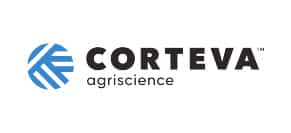Previously, we looked at why the coronavirus pandemic is a great time to start a business. Agri-food businesses are in a fairly good position compared to other businesses. Because food will always be essential, agriculture and food businesses can continue working.
Being in the food industry doesn’t mean “business as usual”, though. Restaurants have closed their doors to stop the spread of the coronavirus, and farmers who made a living supplying those restaurants have suddenly lost their buyers.
The situation is fluid. It changes quickly and constantly. For businesses to survive, they must change their business models. It isn’t just necessary to get through the initial lockdowns, but also to adapt to a post-corona world.
Customers will demand guarantees that their food is safe. The same is true for the packaging it comes in, and the people and places who produce and sell it. New standards in food traceability and hygiene standards will have a serious impact on the global agri-food industry.
As an agripreneur you might wonder how you should go about changing your business model? Like millions of hardworking informal entrepreneurs throughout Africa, you might even ask, “What, exactly, is a business model?” And that is a great place to start.
What is a business model?
The Harvard Business Review explains, “A business model is a description of how your business runs,” while the Businessplan Shop says, “The business model is the mechanism through which the company generates its profit.”
You might have heard terms like Subscription Model, E-Commerce Model, Advertising Model, Rent-to-Buy Model, or Supermarket Model. These are all phrases to describe profit generating mechanisms.
Depending on who you read, different terms are used to describe similar business models. Although the terms may differ, according to Prof. Oliver Gassmann, a business model answers four main questions:
- Who is your customer?
- What do you offer to the customer?
- How do you create the value proposition?
- How do you generate revenue?
How do you innovate your business model?
Have you answered the four questions about your business? Great! Now change two of those answers and you have innovated your business model!
The End.
Well, not quite. Changing your business model will require a bit more reading.
After researching and analysing hundreds of successful companies, Prof. Gassmann and Prof. Frankenberger of the Institute of Technology Management at the University of St. Gallen created 55 business model patterns that you can combine, adapt or refine to innovate your own business model. Their spin-off think tank, the Business Model Innovation Lab (BMI Lab), and their business model navigator tool are some of the best online resources you will find on the subject.
During their research they discovered that only 10% of the companies they analysed invented new ways of doing business. The other 90% of successful companies innovated their business models by combining, refining and adapting existing models.
Nespresso is a good example. They are an agri-food company that sells coffee, but they follow the same business model as Gillette razors who sell cheap razor handles and expensive blades. After a customer buys a cheap Nespresso coffee machine, they are required to continue buying expensive coffee pods for the machine.
Nespresso didn’t invent the model, they innovated by applying the model to the coffee industry. And you can do the same with your business using a simple formula.
The Formula for Innovating Your Business Model
Prof. Gassmann shares four steps for business model innovation: Initiation, Ideation, Integration, and Implementation.
These four steps are not a once-off exercise. You need to run iterations. Design the change. Make a change. Measure how it is working. Go back to the drawing board, and do it again.
Step 1: Initiation
Analyse current business model. Your goal here is to get a clear idea of what problem you are solving for who? How are you doing it? And how does it bring in money?
A fantastic tool to do analyse your business is the Business Model Canvas developed by Alexander Osterwalder and Yves Pigneur. This elegant and effective thinking tool uses a single sheet of paper to divide business models into nine parts that lets you understand how any business functions.
Step 2: Ideation
Take the 55 business model patterns developed by BMI Labs and challenge your current model with each one. Learn how other industries are serving their customers. Can you use bits of other models and change it to solve your customer’s needs? Can you build a more robust company by combining different patterns so you can still do business even if a coronavirus lockdown closes all the shops?
Remember: adapt, refine, combine. Do NOT let your peers and competitors control how you think about reaching your customer. If everyone has a grocery store, can you deliver? If everyone delivers food, can you add-on value?
Step 3: Integration
During integration you need to check the consistency of your business model. This is detail work where you examine all four questions regarding organisational fit,” says Prof. Gassmann.
If you are renting out tractors to small-holder farmers a Rent Instead of Buy or Performance-based Contracting model can work well. But, if you have three tractors and 137 farmers, a Guaranteed Availability model is NOT an organisational fit.
Step 4: Implementation
When you have a new model that looks like it will work, apply it to your business. An important part of implementation is gathering data.
Talk to the people you will impact. If you change the way you interact with your customers, speak to as many of your actual customers as you can, and ask them if the changes benefit them. Information about the quality of their experience is called qualitative data.
Next, look at the numbers. Are your profits seeing a positive impact? Are your costs dropping? Has your new way of doing business attracted new customers? How many? The numbers (quantities) are called quantitative data.
Use what you learn, the qualitative and quantitative data, and innovate your next iteration.
What Business Models are performing the best?
Six months before the coronavirus emerged, top business influencer Bernard Marr said, “Times are changing so fast … many businesses are failing to keep up, and far too many are operating on outdated business models.” With coronavirus in the mix, every single business on the planet is forced to rethink how they operate.

Bernard has identified nine successful business models that he believes every business must understand to determine if it should be used to innovate their own model. You can read his article on his website, or watch his video, The 9 Most Successful Business Models, on YouTube.
To give you a head start with your innovation process, we will briefly summarise each model below and link it to two corresponding patterns developed by the BMI Lab. Keep in mind that each model overlaps with many patterns and how you mix and match the patterns to innovate your business should be appropriate for your business.
1. Subscription Model
Continuous revenue where customers pay monthly or yearly for your products or services. Patterns: Subscription, Rent Instead of Buy
2. Platform Model
Online or physical network environments that connects businesses with people or people with people. Patterns: Two-sided Market, E-commerce
3. Sociable and Authentic Business
Relatable companies with values and opinions that connect with their customers on a human level. Patterns: Customer Loyalty, Robin Hood
4. Employee-focussed Business
Attract really good employees by creating a great company culture where employees are safe, happy, and comfortable. Patterns: Experience Selling, Customer (Employee) Loyalty
5. Partner-centric Business
Leverage other companies and outsource functions to create instant flexibility and scalability. Patterns: Orchestrator, Layer Player
6. Customer Value-obsessed Business
Make things easier, better, faster, more convenient, more unique and more valuable for the customer. Patterns: From Push-to-Pull, User Designed
7. Constantly Innovating Business
Continuous product, service, and operation innovation to stay at the cutting-edge of development. Patterns: Aikido, Solutions Provider
8. Data-driven Businesses
Drive performance improvements using the data collected to inform supply-chain decisions, anticipate consumer demand, streamline processes and offerings, etc. Patterns: Leverage Customer Data, Hidden Revenue
9. Tech-savvy Businesses
Use new technology and develop technology to improve what they are doing, how they are doing it. Patterns: Digitization, License
Now that you understand the formula for innovating a business model and which business models will likely be successful in the future, you can take the next step. It is time to analyse your business using the Business Model Canvas developed by Alexander Osterwalder and Yves Pigneur.
If you have a winning agribusiness model that can withstand the difficult coronavirus economy, enter the GoGettaz Agripreneur Prize Competition!













